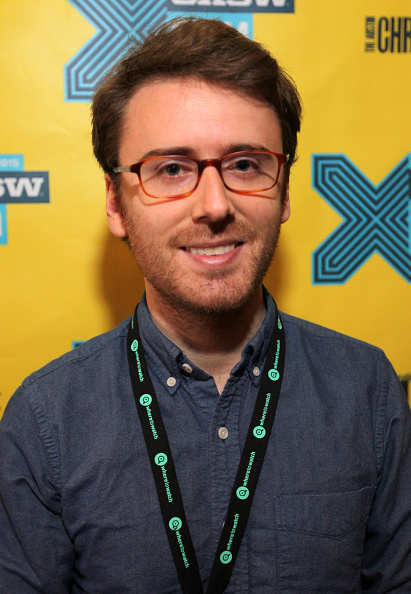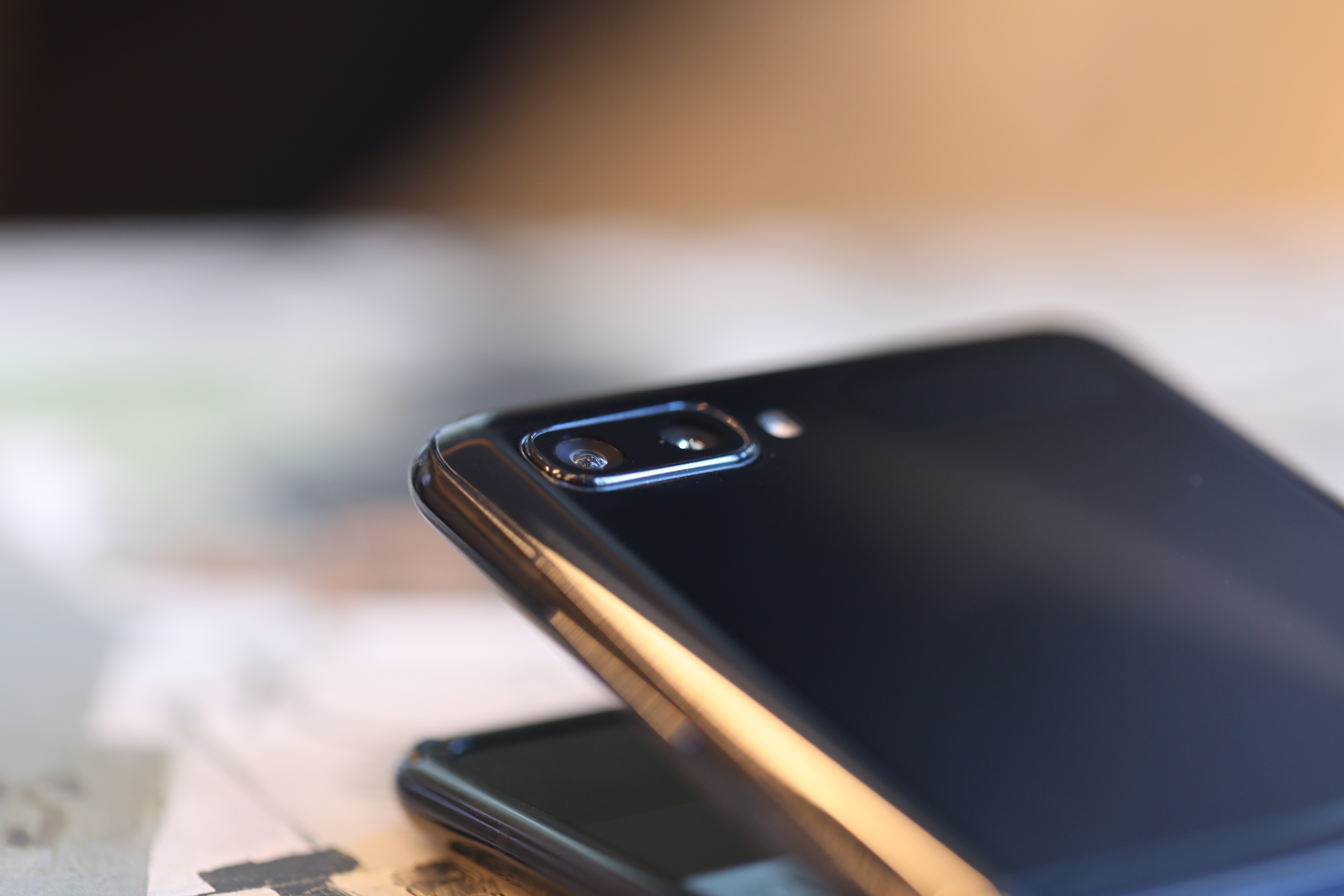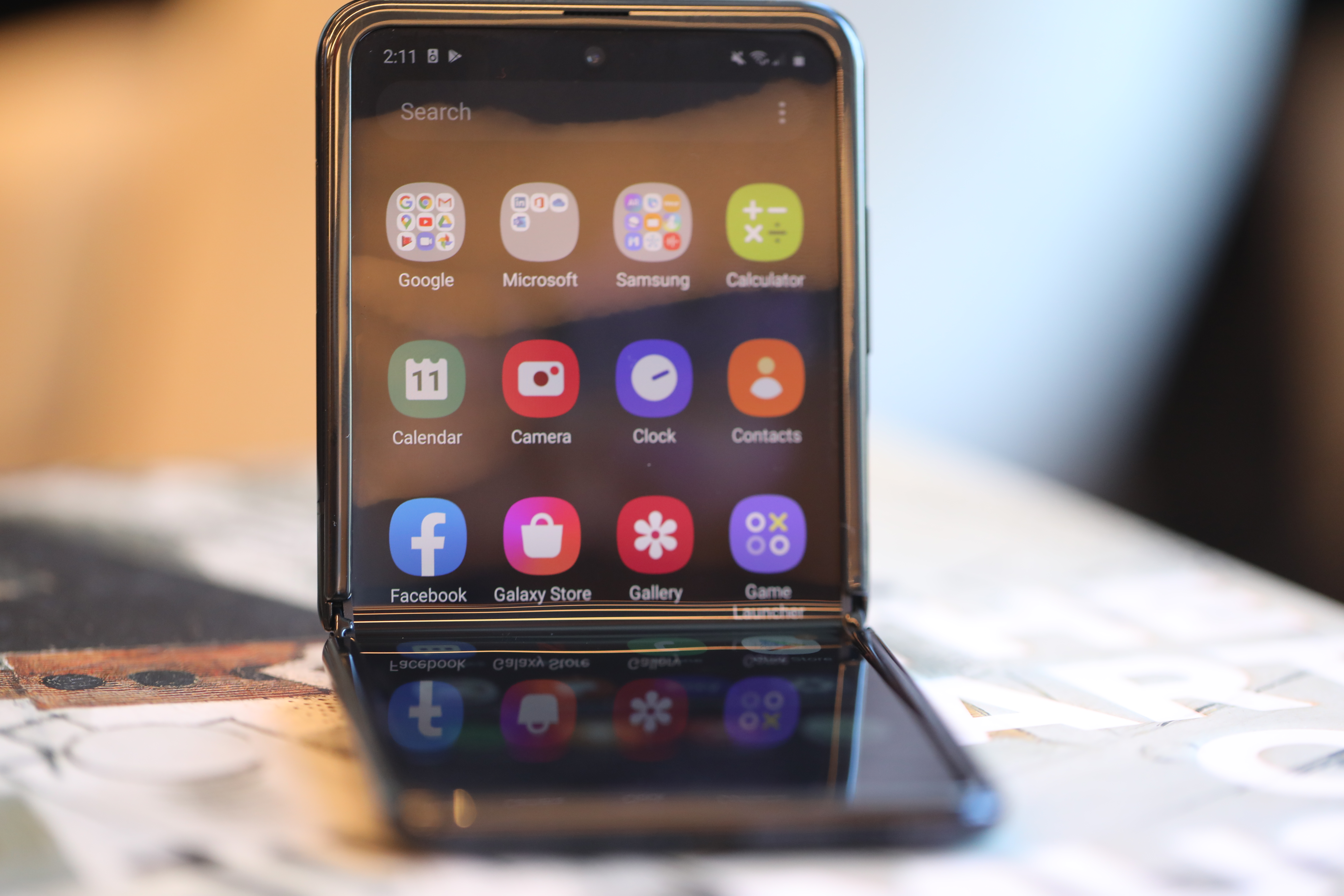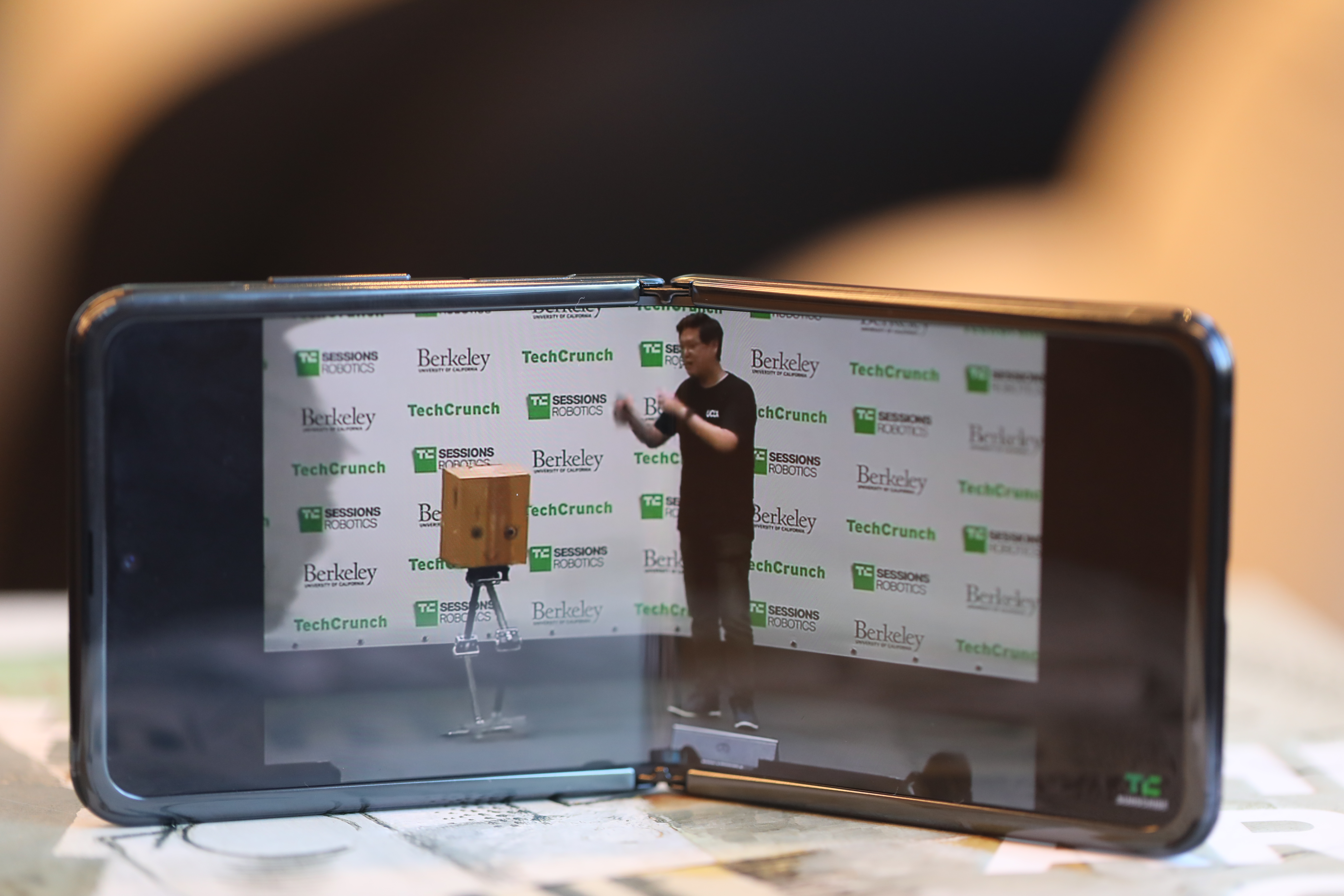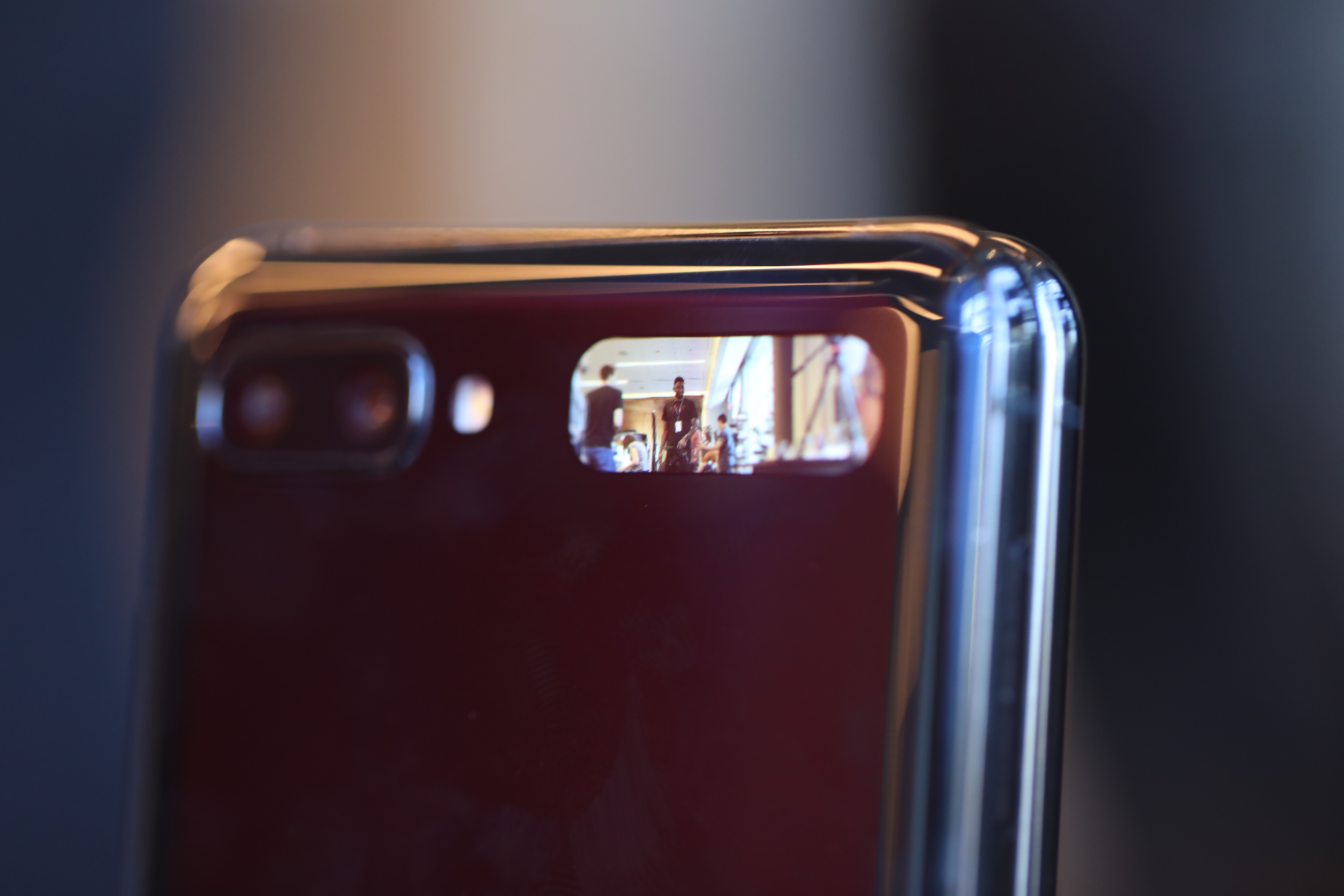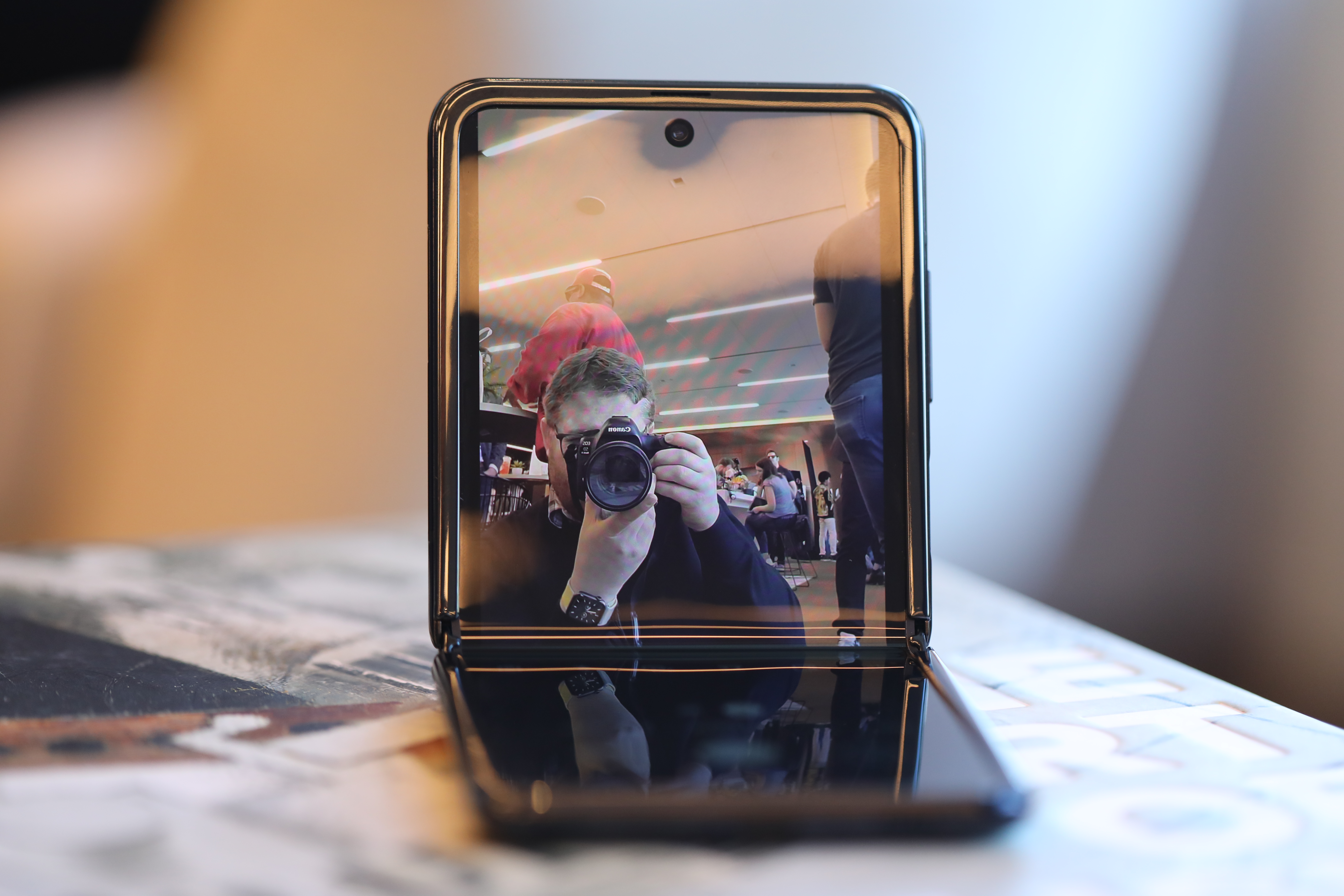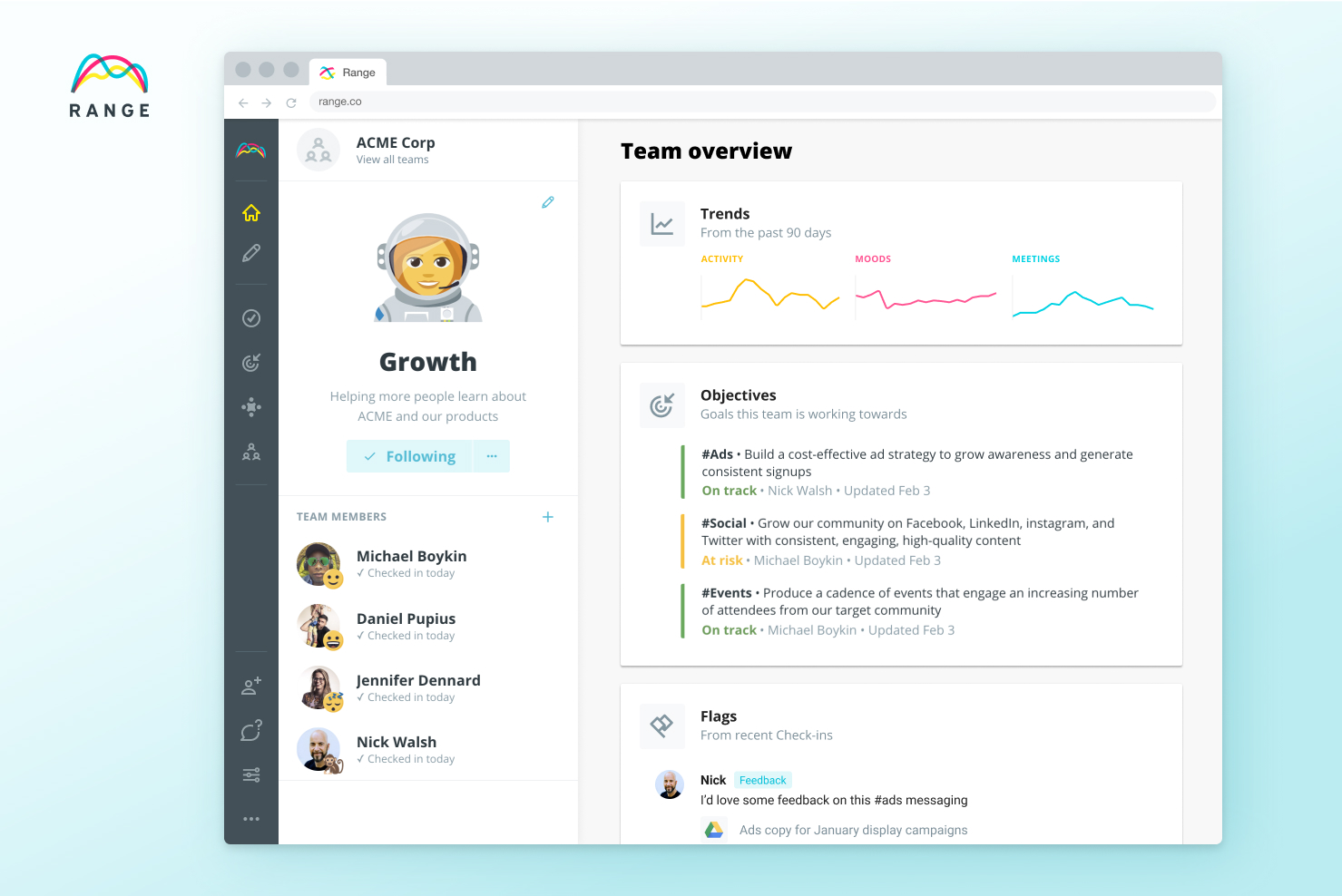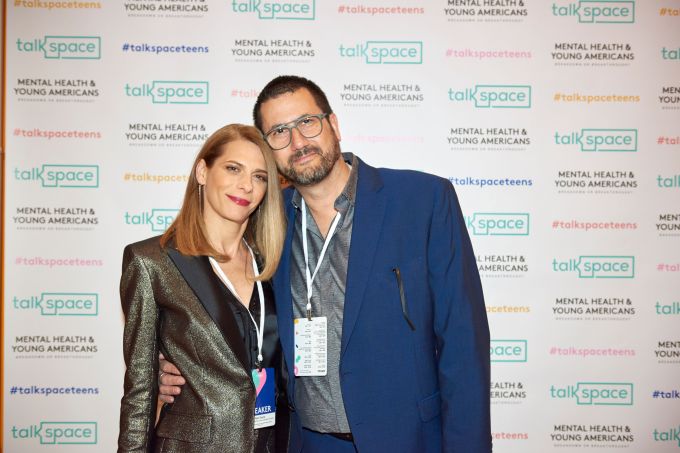“If I was running Clearbanc by myself, it probably would have gone off the cliff eight times at this point,” says Clearbanc co-founder Andrew D’Souza.
“If I were running the company by myself, it would be half its size,” adds Michele Romanow, Clearbanc’s other co-founder.
In addition to starting the $420 million-backed fintech company together, D’Souza and Romanow are in a relationship.
The two initially met at an event in San Francisco, and followed up with a friendly informational interview at a Mexican restaurant. D’Souza’s fundraising experience was a draw for Romanow, who at the time was looking for information about how to raise cash for her startup. Romanow ended up selling her company to Groupon, but her conversation with D’Souza helped to anchor the valuation. It was also the beginning of a relationship.
When they started dating in 2014, they swapped war stories about company building. Their connection hinged on this initial commonality — D’Souza had fundraised all his businesses, whereas Romanow had bootstrapped. It was from these conversations that they created Clearbanc, the Canada-based VC firm that specializes in non-dilutive revenue share agreements for startups.
Startups with coupled co-founders at the helm are scoring big funding rounds and exiting companies. Julia and Kevin Hartz co-founded Eventbrite, which went public on the New York Stock Exchange in 2018. Married couple Diane Greene and Mendel Rosenblum were on the co-founding team of VMware, which sold to Dell in 2015. The bond of a relationship may be a secret weapon in company building for new-wave tech startups, but that doesn’t come without risks, like co-founder disharmony, equity supermajority and even divorce.
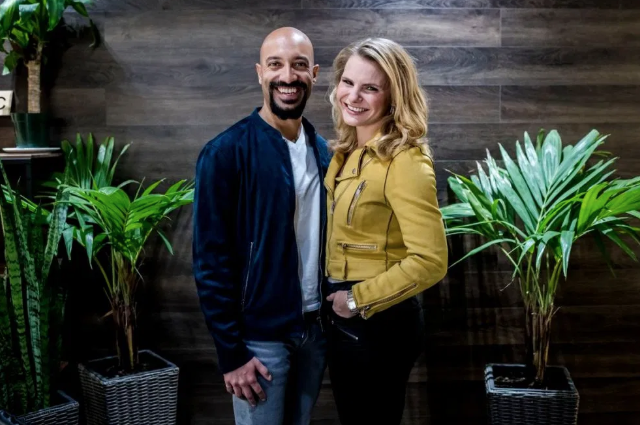
Clearbanc founders Andrew D’Souza and Michele Romanow
“Just put the phone down.”
Talk to anyone with a co-founder title at a startup and you’ll find one trend: free time is nearly nonexistent. Couples running a business together say it’s advantageous to be on the same workday cycle. “When you’re working on the same business, you’re on the same cadence of when things are blowing up,” says Romanow. “So I know exactly why Andrew is on his phone. I know that if he doesn’t do this, I will have to do it.”
NEXT Trucking co-founders Lidia Yan and Elton Chung have raised $125 million total for their logistics startup, including a $97 million Series C from Brookfield and Sequoia. The pair says that the company is a presence that’s fully built into their lives and their relationship at all times. While that may be great for a business, it’s not always great for their marriage. “We got into a momentum of talking about work all the time. Not only at the office but at home,” says Yan. The solution is a simple rule enforced by an iPhone alarm. All work-related talk must cease after 8pm every day after the alarm goes off. They also use free time on the weekends to go to restaurants in LA, one of their shared passions.
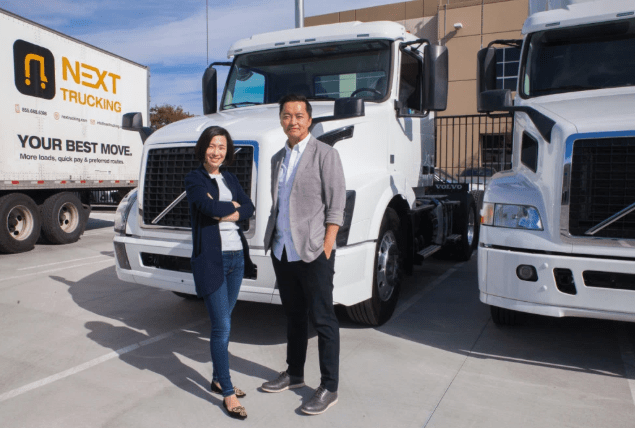
NEXT Trucking co-founders Lidia Yan and Elton Chung
Co-founder couples say that if you’re scaling a company, you’ll have to be okay with putting other life decisions on hold, like going on your honeymoon or having kids.
Leslie Voorhees and Calley Means were married in 2016, but still haven’t taken their honeymoon. They co-founded Anomalie, a wedding dress customization startup that has raised $18.1 million. Instead of vacationing to Bora Bora the day after their wedding, the newlywed founders hopped on a plane to China, where Leslie stayed for a couple of months to set up the supply chain for Anomalie. The couple admits that even now, they don’t make time for their personal lives.
“We have not spent more than an hour of our entire marriage not talking about wedding dresses. It’s not necessarily the healthiest thing, but we’ve enjoyed obsessing about wedding dresses every day,” says Leslie.
Their skills complement each other: Calley’s superpower is that he can move fast, whereas Leslie is more methodical and good at setting up structure. While they say that being a co-founder couple has strengthened their bond, they’re working on setting boundaries. Being a founder means you have to sacrifice other areas of your life for the company.
“Once we raise the Series D, we’ll start thinking about having kids,” jokes Calley — in what may not actually be a joke.
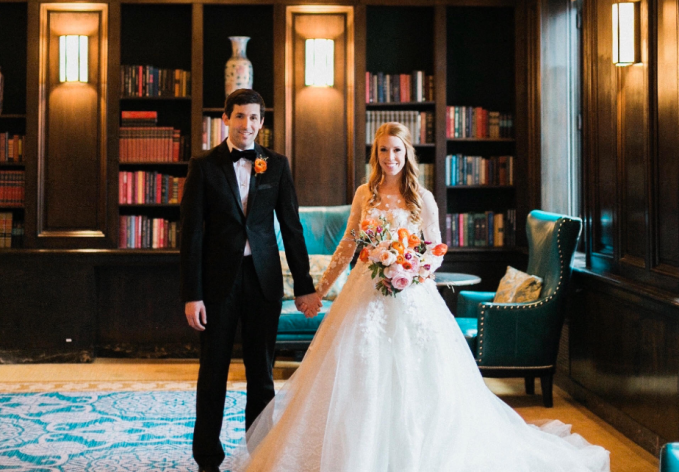
Leslie Voorhees and Calley Means, Anomalie co-founders
Investors are warming up to married co-founders
Clearbanc wants to make it easier and faster for startups to raise growth capital. Their 20-minute term sheet product is meant to help founders raise money in 20 minutes, rather than the traditional 3 to 6 months the process typically takes. But how did investors react to Clearbanc’s co-founders relationship status? Not well, at first.
A Clearbanc investor passed on an early round, explaining to D’Souza and Romanow that they would have backed either of them individually, but that they were worried about backing them as a couple, especially since they had only been dating for a year at that point.
“The same investor ended up coming in two rounds later at 100 times the valuation,” says D’Souza. This, they felt, proved that fear of investing in a couple was a false sense of increased risk.
It seems investors today agree. When the married co-founders of Apli, a Mexico-based on-demand recruiting platform, walked into the office of ALLVP, the fund wasn’t entirely sure about what it meant to invest in a company run by a married couple.
Founders Vera and Jose met while studying together at Harvard Business School before working at two separate Rocket Internet companies in Mexico and foundling Apli. The business model, product market fit and potential impact for the company were typical factors the fund mulled over before writing a check, but ALLVP also considered the founders’ married status.
“After some discussion, we decided to analyze the team as any other founding team,” says ALLVP partner Federico Antoni. Besides the obvious personal chemistry, there was a professional chemistry between Vera and Jose. “We weighed the risk of divorce and decided to take it. We gained a team fully invested in the company and one that could balance personal life and startup life.”
Equity could pose another risk factor. Investors could be wary of founder couples depending on the equity structure. If their finances are combined, a co-founder couple could own a supermajority of a startup. Say two non-married founders owned 20% of a company — a co-founder couple whose finances are tied together would own 40%. Given this logic, VCs would inherently have more negotiating power if the founders aren’t financially linked.
VCs I talked to didn’t necessarily agree with that logic, though.
“The only thing with equity that matters to me is if the founders have enough,” says Andreessen Horowitz General Partner David Ulevitch. “Venture capital investments are inherently minority investments, so it’s really just about ensuring founders are motivated and rewarded for building something enduring.”
But what happens when the dual identities of co-founder and spouse don’t work?
Divorce won’t necessarily be the demise of a startup
Sara and Josh Margulis founded Honeyfund, a honeymoon registry site, in 2006. The then-married couple appeared on Shark Tank in 2015, winning an investment from Kevin O’Leary. Sara says that Honeyfund is different from popular wedding startups like Zola and The Knot in that the core product is a crowdfunding platform enabling newly engaged couples to organize wedding and honeymoon financing.
When Sara and Josh divorced in 2019, the first instinct was to sell the company. However, “the more we pulled apart professionally, the more opportunities I saw to organize the team the way I wanted to and push the priorities that I wanted,” Sara says. Ultimately, Sara decided she would buy her ex-husband out of the company and continue on a new trajectory as CEO.
“If we hadn’t been working together, our separation process would have been different. There were truths that needed to be spoken that were emotionally difficult in a marriage, that I didn’t want to put on Josh in the middle of a big Target partnership launch.”
The genesis of their business was rooted in their own experience as a married couple. They’d won the affection of Sharks, operating in a $72 billion industry hinging on the commoditization of love and lasting marriage. But the honeymoon phase can’t last forever. Up to 50% of married couples in the United States will split, according to the American Psychological Association.
Now, Margulis’ experience of divorcing her co-founder is informing new products and a marketing strategy as she continues to iterate on her startup.
Post-divorce, Margulis has been working on a content-focused strategy at Honeyfund that will include a book and a podcast centered around the idea of how couples can successfully navigate marriages. She’s sourcing 14 years’ worth of Honeyfund couples to be interviewed, along with research from psychologists and marriage experts to help couples avoid the doom she went through.
The secret weapon
Co-founder couples are the first to eagerly point out an obvious advantage. Aligned passions, equal motivation, complementary skillsets and industry experience are a baseline for any co-founder relationship, married or non-married. But being married to your co-founder includes unique challenges like time management and setting boundaries in the boardroom and in the bedroom.
“Co-founder disputes are the number one early startup killer, but it doesn’t have to be that way,” writes Garry Tan, managing partner at Initialized Capital and former Y Combinator partner.
Co-founders aren’t always aligned on big decisions at the company. Is remote work allowed? Who do we accept funding from and how do we deploy capital? Who do we hire for a key executive role?
There are plenty of things to fight about when the stakes are high and your employees’ careers are at risk. And co-founder disharmony has been a key reason many startups flounder. But being proactive about conflict management rather than avoiding it is key — as is knowing when to get professional help from an executive coach or a therapist. This could help early-stage companies recalibrate and dodge turmoil.
If this line of reasoning holds, co-founder couples may be at an advantage because they already have built-in communication tools in their relationship.
Ulevitch says that for him, couples as co-founders is not a turn off.
“Lots of co-founding teams fall apart, and it’s often to not really knowing each other very well, especially when the going gets tough. Couples actually solve for that aspect nicely.” Founders certainly back up this assertion.
“One of the company values is to disagree and commit,” says NEXT Trucking’s Lidia Yan. In what she describes as a rare occasion when executives are not aligned on a decision, she says that a vote will take place, and then the team will all commit to the final decision. In order to mitigate risk, founders say it’s key to have well-defined job descriptions. Stay in your zone, and because you are partners, you should already trust each other with what each person is specialized at.
Being married to your co-founder is a secret weapon, according to Helena Price Hambrecht and Woody Hambrecht.

Haus co-founders Helena Price Hambrecht and Woody Hambrecht
Helena and Woody met during the pre-swipe era on OkCupid in 2012. “I had just joined the online dating space and saw this hot farmer dude. We were a 96% match, so I messaged him,” says Helena of how she first connected with her future husband.
“I literally thought someone was catfishing me,” thought Woody upon reading Helena’s message. “There’s no way this person is writing me. It took me three or four times to write her back because I wasn’t sure if she was a real person.”
After some back and forth, the two met at a dive bar in the San Francisco Richmond neighborhood on a date that culminated in drinking 40s and watching rap videos on their phones in the park. “It’s kind of hard to explain, but it was just so easy. We knew we were going to know each other for the rest of our lives. Maybe as friends, maybe more, we didn’t know.” They stayed friends for four years, and were married in 2018.
Haus’ genesis was a combination of the founders’ backgrounds, and the direct-to-consumer aperitif brand just scored a $4.5 million seed round. Woody owned a wine and aperitif brand but felt that he wasn’t making a big enough impact. Helena, a Silicon Valley branding and production veteran, felt that Gen Z didn’t want to get drunk anymore, and millennials are tired of compulsory, expensive happy hours. In deciding where to put their money, younger consumers are thinking about their bodies, brand image, transparency, sustainability and authenticity.
Helena wondered why the same standards aren’t being applied to as big of an industry as liquor. Why was there not a Glossier or Everlane of alcohol? She felt that while there’s a massive opportunity with all these shifting consumer trends, no one can make a direct-to-consumer alcohol brand. Haus was born from what the founders say was a magic “techie married a wine maker” moment. Woody knew about a legal loophole that could allow the couple to build the Glossier of alcohol.
“There’s this tiny sliver in the aperitif realm, where if a beverage is made of mostly grapes and is under 24% alcohol, it can be classed as a wine and sold DTC,” explains Helena. They had that idea when they had a three-month-old baby. “We do not have time to do this but we have to do it because it’s the best idea we’ll ever have in our life,” she says.
“We have a tool kit. We are married. If we have a disagreement about something, we are going to work it out because we’re married. Our skillsets are so clearly defined so there’s not much friction. For us it’s this cool balance where we have two totally separate camps of expertise,” remarks Helena.
Woody and Helena have another secret weapon. They work with a business coach who has a background in psychotherapy, and believe that all co-founders should go to therapy together, because it’s always deeper than just business.
Talkspace’s Roni and Oren Frank would agree. Their journey to the mental health world started from a crisis within their own relationship.
“Our marriage was falling apart, and we eventually decided to give it a last chance in couples therapy.” It was the first time either of them had experienced therapy. It taught them how to communicate better, read each other and support each other better. It gave them tools to manage conflict.
Therapy inspired Roni to leave her career as a software developer and go back to graduate school to study psychology. While studying, she says she was exposed to how broken the mental health system in America is.
Roni says that research showed 25% of Americans suffer from mental health complications, yet an entire two-thirds of that bucket has no access to mental health care. The two founders both felt passionate about fixing this problem based on how instrumental therapy was in rescuing their own marriage. They decided to launch a platform that lets patients and therapists communicate online.
Talkspace, which wants to open access to mental healthcare, has now raised $110 million, most recently a $50 million Series D. The product ideation for the company was integral to the relationship, and the company now has more than 100 employees. But when Talkspace was a young, 10-person startup, it was a lot harder. Roni notes that the co-founder relationship provoked extreme anxiety.
“I didn’t sleep well, I didn’t eat well and I experienced burnout.” She says she had to force herself to place boundaries when it comes to being consumed with work. However, overall, her experience has been that sharing a mission and a goal empowers the marriage, a healthy inverse.
Co-founder couples rave about the experience of running a business with their spouse. It’s no doubt these companies are developing proprietary products, running winning marketing strategies and generating big rounds and exits.
The married co-founder dynamic appears to be great for business, but time will tell if it works as equally well for marriages.

Source: Tech Crunch






 “Who likes healthy snacks! That’s why the investors stopped giving us money, because there wasn’t any f*cking snacks in this b*tch. We were snackless. Who the fuck can work in a place without snacks!” -Richards
“Who likes healthy snacks! That’s why the investors stopped giving us money, because there wasn’t any f*cking snacks in this b*tch. We were snackless. Who the fuck can work in a place without snacks!” -Richards